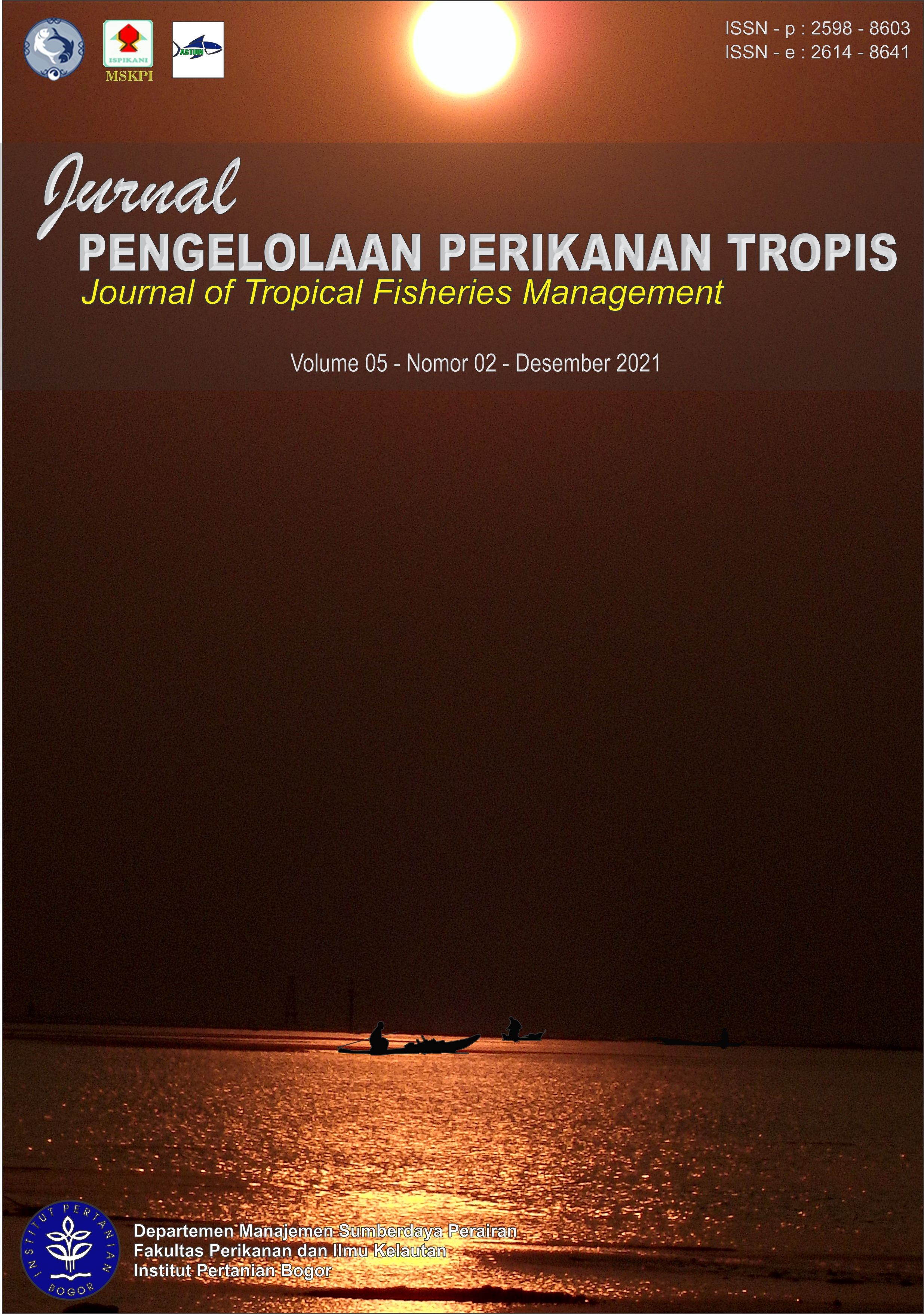Socio-Spatial Approach to Cultivation of Lobster in the Ekas Bay Area, Lombok, West Nusa Tenggara
Pendekatan Sosio-Spasial Budidaya Lobster Pada Zona Wilayah Teluk Ekas Lombok Nusa Tenggara Barat
Abstract
Indonesia is one of the countries that has the largest marine wealth in the world with an area of 6.32 million waters with an accumulated coastline of 81,000 km and has a very large coral reef area as one of habitats for lobster. Lobsters live at a depth of 100-200 meters below sea level with a temperature of 20-30°C, with the distribution of lobsters in almost all Indonesian waters. One area of Indonesia’s center for lobster cultivation is West Nusa Tenggara (NTB). The Directorate of Marine Spatial Planning designed a program scheme that was prepared to follow up on Lombok's lobster cultivation center, the lobster estate program or known as lobster cultivation village with blue economy principles. The core of sustainability which in development considering resources in the marine space characteristics that are vulnerable to environmental changes and open access - utilization that is open to the public and everyone can access it freely. Answering how conflicts of interest fight over marine space, it is necessary to pay attention to the relationship between space and the humans involved. This analysis is explained by using Levebvre's Socio-Spatial approach where space neutral and passive geometry. Space represents the site of struggle. In particular, the purpose paper is to add another point of view that already exists in reporting the detailed plan for marine aquaculture utilization zones. This article descriptive qualitative method. Results obtained preparation detailed spatial planning, consider the existence of conflict of interest contestations between stakeholders and accommodate conflicts of interest that may occur.
Downloads
References
Aminah S. 2016. Konflik dan kontestasi penataan ruang Kota Surabaya. Masyarakat: Jurnal Sosiologi. 20: 59–79.
Chan TY. 2000. Lobster. In: The Living Marine Resources of the Western Central Pacific. Volume 2 Cephalopods, crustaceans, holothurians, and sharks. FAO Species Identification Guide for Fishery Purposes. FAO-UN, Norwegian Agency for International Development.
[DPRL-KKP] Direktorat Perencanaan Ruang Laut-Kementerian Perikanan dan Kelautan. 2021. Prototipe Model Blue Ekonomi Perencanaan Zona Budidaya Perikanan Laut. Jakarta (ID): KKP.
Hung LV, Tuan LA. 2009. Lobster sea-cage culture in Vietnam. ACIAR Proceeding no. 132. Canberra (AU): Australian Centre for International Agricultural Research. hlm 10–17.
[KKP] Kementerian Kelautan dan Perikanan. 2021. Peraturan Menteri Kelautan dan Perikanan Nomor 28 Tahun 2021 tentang Penyelenggaraan Penataan Ruang Laut. Jakarta (ID): KKP.
[KKP] Kementerian Kelautan dan Perikanan. 2011. Kelautan dan Perikanan dalam Angka Tahun 2011. Jakarta (ID): Pusat Data Statistik dan Informasi. pp 120.
Kesteloot C. 1998. Over de beperkingen van de sociale mix als beleidsstrategie. Planologisch Nieuws. 18(3): 144–147.
Lefebvre H. 1974. The Production of Space. Terjemahan oleh Donald Nicholson-Smith. 1991. Oxford (UK): Blackwell Publishing.
Moosa MK, Aswandy I. 1984. Udang karang (Panulirus sp.) dari perairan Indonesia. Proyek Studi Pengembangan Alam Indonesia, Studi Hayati Potensi Ikan, Lembaga Oseanografi Nasional, Lembaga Ilmu Pengetahuan Indonesia. Jakarta. 41.
Pauli G. 2006. The Blue Economy, 10 Years, 100 Innovations, 100 Million Jobs. New Mexico (US): Paradigm Publication.
[PP] Pemerintah Pusat. 2021. Peraturan Pemerintah Nomor 21 Tahun 2021 tentang Penyelenggaraan Penataan Ruang. Jakarta (ID): Pemerintah Pusat.
Robles, C. 2007. Lobsters. In: Denny MW, Gaines SD (eds). Encyclopedia of Tidepools and Rocky Shores. US: University of California Press. Pp 333– 335.
Romimohtarto K, Juwana S. 2005. Biologi laut: Ilmu Pengetahuan Tentang Biologi Laut. Jakarta: PT. Djambatan.
Subani, W. 1983. Survey alat penangkap udang barong di Pantai Selatan Bali. Marine Fisheries Research Report. 25: 37-45.
Subani W, Prahoro. 1990. Status nelayan dan perkiraan potensi udang barong (Spiny Lobster) di pantai selatan Bali. Journal of Marine Fisheries Research. 54: 9-19.
Sujadmi, Murtasidin B. 2020. Perencanaan tata ruang laut: konflik, negosisasi, dan kontestasi kepentingan ekonomi politik lokal di Bangka Belitung. JIIP: Jurnal Ilmah Ilmu Pemerintahan. 5(2): 163-173.
Verianta M, Zahida F, Jati WN. 2016. Jenis lobster di pantai Baron Gunung Kidul, Yogyakarta. Jurnal Biologi. 11(17): 2-7.
Wahyuni IS, Hartati ST, Subani W. 1994. Perikanan udang karang (spiny lobster) di perairan kabupaten Tabanan, Bali. Jurnal Pen. Perikanan Laut. 87: 84–90.
Copyright (c) 2021 Jurnal Pengelolaan Perikanan Tropis (Journal of Tropical Fisheries Management)

This work is licensed under a Creative Commons Attribution 4.0 International License.
After the article is submitted and published in this journal, it is fully copyrighted by the Journal of Tropical Fisheries Management. If excerpts from other copyrighted works are included, authors must obtain written permission from the copyright owner and give credit to the source in the article. Then, authors or reader is allowed to copy, share, and redistribute articles/material in any form. But it must still include the appropriate source and credit because the article in this journal is licensed by Creative Commons Attribution 4.0 International License (CC BY 4.0).



1.png)
1.png)








